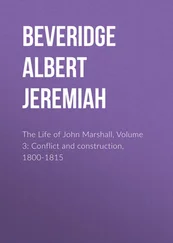A combination of both approaches could then introduce a new level of reasoning to each conception and thus strengthen their respective explanatory value: incorporating a usage-based perspective into semantic prosody would lead to a lexically semi-fixed collocational construction, while a usage-based approach might be able to answer the partly restricted pervasiveness of semantic prosody. This would be the case if collocations, for example, enter a kind of life cycle, starting off as a rather fixed, almost compound like expression, which through frequent encounter and concomitant entrenchment, transition into a more flexible, semi-lexicalised structure which takes its basic meaning from a more established prototype. On the one hand, this would make the definition of collocation fuzzier, since collocational combinations then do not represent examples on a gradient scale, but should instead be seen as early (for established pairs) or late (for more creative versions) snapshots of a collocational structure, depending on the collocation’s developmental stage. On the other hand, identifying a kind of collocational meaning could not only facilitate EFL teaching but also improve teaching materials such as dictionaries and workbooks or even help to make the output of software, like online translations or other NLP applications more fluent and/or native-like. An important prerequisite for this kind of usage-based model of collocations and creativity is a firm anchoring of creative processes as a part of human cognition. This is not self-evident, since creativity is often understood as the exceptional faculty of only a few outstanding individuals, such as professional authors, composers or artists in general. Thus, the next chapter will show that this conception does not do justice to the pervasive character of creativity.
3.2 Creativity and Cognition
The examples from previous chapters have shown that creative alternations of collocations are possible and that at least some of these variations semantically lean towards parts of the established meaning of the original collocation. A potential relationship between collocations, their creative alternations, and syntactic structures has been outlined. Since traditionally, however, the terms collocations , creativity, and constructions have been associated with quite different fields within linguistic research, this chapter will be dedicated to a more detailed introduction of the concept of cognitive creativity in language research and how it contributes to processes within human cognition.
If we think of creativity , one of the first features which might come to mind is a notion of novel, innovative concepts. In this, it seems to differ quite dramatically from phraseological phenomena such as collocations, which are often associated with prefabricated, institutionalised or even partially fixed items (> 2). But, if creativity consisted only of unique and novel aspects, it would border on nonsense, since it would clearly lack a basis against which it can be understood. Anyone who has ever been to a country where s/he was not familiar with the local language knows from experience that a language made up of completely unfamiliar words and structures, for example, would hardly be more than just a string of characters and sounds. For this reason, creativity, linguistic or otherwise, needs a generally accepted framework to operate or, as Sternberg and Lubart (1999: 3) point out: “Creativity is the ability to produce work that is both novel (i.e. original, unexpected) and appropriate (i.e. adaptive concerning task constraints).”
Therefore, outside academic discourse linguistic creativity is commonly associated in one of two ways; either as the rather rare and ingenious trait of an author, whose creativity is the acclaimed source of extraordinary pieces of work, or, more recently, as a kind of key characteristic for any modern human being, who needs creative ways of thinking and communicating in order to have successful job interviews, lead fruitful discussions or simply be regarded as an interesting person to talk to. In the past, several approaches have sought to account for this dichotomy. Craft (2001: 45–49) for example uses “high” or “big C” creativity for the former, while she refers to the latter as “little c creativity”. Kozbelt and colleagues even suggest a further subdivision, taking into account innovation which is only novel to an individual (“mini-c”) as well as a separate level for professional creatives, like journalists, who have not (yet) produced an outstandingly creative piece of work (“Pro-c”) (Kozbelt/Beghettto/Runco 2010: 23–24). In addition to these four categories, they also point out six main factors within creativity research, known as the Six P’s of Creativity (Kozbelt/Beghetto/Runco 2010: 24–25): product, process, person, persuasion, potential, and place. For the study of language, these six factors mean that creative language use does not just consist of creative language per se, which might simply be explained through the process of language acquisition and its subsequent cognitive manifestation, but that it is also influenced by individuals who might be to different degrees capable (potential) as well as more or less inclined (person) to use language creatively. Furthermore, Kozbelt and colleagues explicitly include a potentially creativity-fostering setting (place) in this list. Hence, a focus on the creative product and process should only be a starting point for research into creativity, and person-specific factors, as well as the setting and context, should be considered too.
This multifactorial approach has not always been part of the conception of creativity. Very early academic thought on linguistic creativity instead seem to focus on little c creativity. In Plato’s dialectic work Cratylus (Plato/Reeve 1998), for example, the author explores the relation between language and reality. There, the topic of creativity is taken up in the quite literal sense of creating something, in this case, words for people and everyday items, both of which Plato refers to as “names”. A discussion on the origin of these labels unfolds between Hermogenes, who claims that “[…] the correctness of names is determined by anything besides convention and agreement” (Plato/Reeve 1998: 2), and Socrates, who assumes that meaning and structure come from within an item. To illustrate his point, Socrates compares linguistic structures like phones, syllables and, with these, words, to a broken weaver’s shuttle and the process of (re)creating it1.
From this conception of linguistic creativity , it follows that every item has an inherent meaning which influences its lexical shape and application. Therefore, if the meaning of an item precedes its name, all potential meaning dimensions should be an a priori part of its definition. A creative use of a word is then simply its correct application, for all a word does is to “divide things according to their natures” (Plato/Reeve 1998: 10). Since Plato focuses, however, more on labels and terms within a language, he does not elaborate the consequences his approach might have for lexical items which are used in an idiomatic sequence, such as idioms and collocations.
Only recently have cognitive linguistic approaches put the human need to conceptualise his/her environment at the centre of any linguistic activity. But because these surroundings change with experience and outside influences, concepts need to be re-combined, expanded or even transformed on a regular basis; these processes are very similar to a usage-based linguistic conception. This becomes even clearer if one compares the three most common types of creative thinking, combinatorial , exploratory or transformational creativity (Boden 2001: 96–97) to general usage-based principles such as schematisation, analogy, entrenchment and competition (> 4). As will be shown below, all types of creative thinking can be defined and explained through these four basic cognitive processes, which suggests that creativity could equally well be interpreted as an inherent part of language acquisition.
Читать дальше
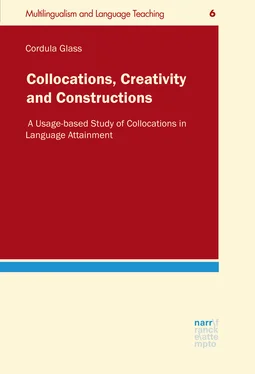

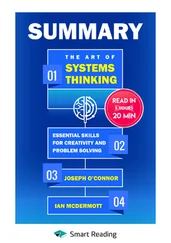

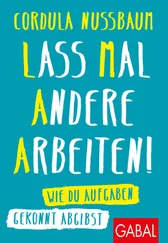

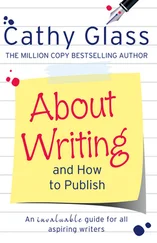

![Chade-Meng Tan - Search Inside Yourself - Increase Productivity, Creativity and Happiness [ePub edition]](/books/703803/chade-thumb.webp)


